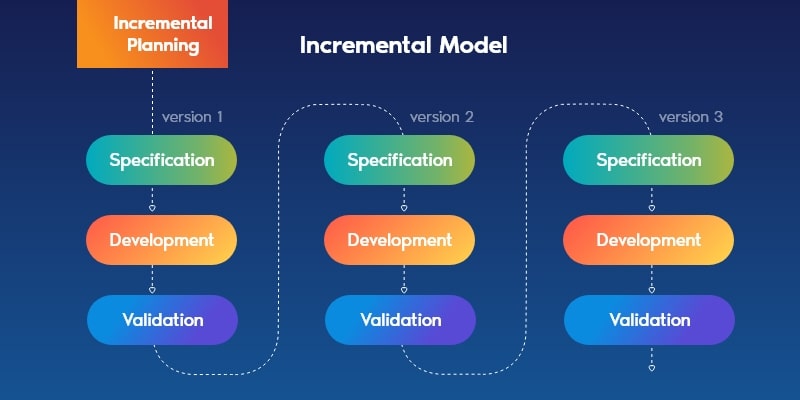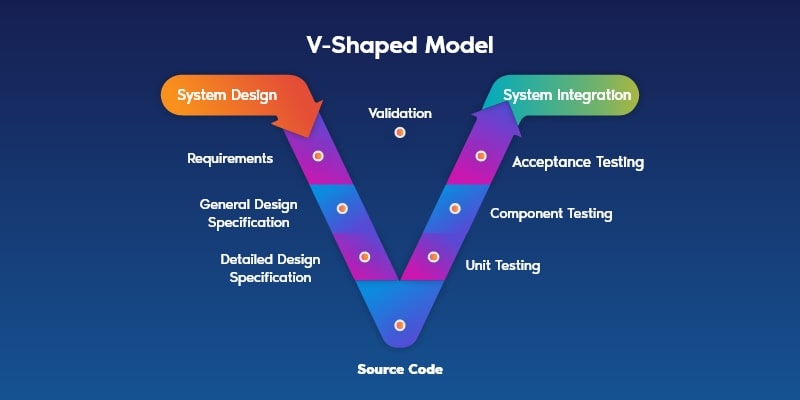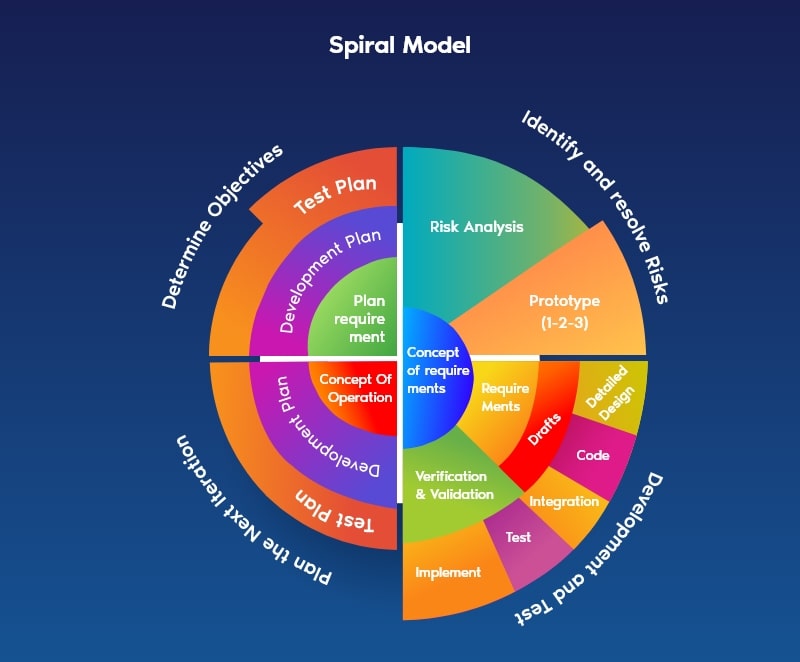Editor’s Note: The software development process plays an integral part in the successful deployment of software. Excellent Webworld follows the entire software development lifecycle to provide clients with the best software solutions. Know about the steps of software development via this article. Also, get in touch with us in case of any queries or build your own software,
So, do you believe that life is so spontaneous? Like in the meantime one decides to get a tattoo or plan a family trip.
Though, can you be this quick while building software for your business?
You need to be inch-perfect for your software development lifecycle. Otherwise, it may result in months to years of delay.
In fact, when you look at stats, it shows that in 2022, Information Technology (IT) has spent approximately $675 billion on the growth of enterprise software. It was 11% more in comparison to last year.
As it is said for software development, you never act on a hunch – unless you’re planning for a business suicide. Remember, every great piece of software starts with a perfect plan followed by a clear process.
It may vary from business to business, though the center point is to underpin the entire steps of software development.
In the article, we have come up with an immersive overview of the IoT software development process to make things more clear for you.
Let’s start with the basics, and then move forward to what is the SDLC process.
What is SDLC (Software Development Life Cycle)?
In simple terms, SDLC is defined as an overview of what it takes to build software. You can even call it a series of stages that software passes through during its life tenure.
Note each software development – be it part of planning or not goes into the same procedure right from planning to its launch. By and large, the phases of the entire plan are known as Software Development Lifecycle (SDLC).
In another way, we can say that each step makes an output that is later used as an input for the succeeding step.
When explained in informal terms, you can connect it with baking a cake. The very first step over here is to combine flour with vanilla powder and then add butter and eggs to create a mixture for baking. Though, if you don’t follow a proper procedure here you will mess up your baking.
The same goes for software development planning. Take note, whatever software development methodologies you follow – the process remains constant. (further, in the blog we’ll learn about various types of software development methodologies)
Importance of Software Development LifeCycle – Must Know
Though, many of us are still wondering, “why are software development process steps crucial?” Using a perfect SDLC will do wonders for your software.
The below-given points share the answer for the same! Let’s deep dive into it!
✓ Step up the exact roles and responsibilities for each member of your team. (software developer, designer, QA, project managers, and so on)
✓ Lets the entire team stay on the same page, thence avoiding any disturbance as well as confusion in the process.
✓ Enables an honest flow of communication between the software engineers & clients.
✓ To let the project move without any creep, SDLC enforces an ideal step of “definition of done”. (This ensures that a phase of the development process is done and ready to move future to the next phase)
✓ Quality and on-time delivery are two benefits that one gets with a software development plan.
✓ Software development process facilitates the whole management control no matter if it is a small or big project. In short, visualize the entire development progress.
✓ High-quality software is a sure thing with the SDLC process. Because the synchronous steps followed leave no scope for bugs.
The 7 Stages of the Software Development Process
1. Analysis and Planning
The very first step of SDLC is requirement gathering from the clients or stakeholders of your project. The client defines the needs and problems of their project that later turns into the form base for concluding on the requirements.
Thereafter, a quick analysis takes place for the gathered provisions. Market research and competitor analysis are carried out in order to come up with the best software solutions.
Besides, the four core things to look at developing software here are;
Alignment: The type of software you need in order to rule over the market and gain the expected ROI.
Resource Management: Team formation for allocating the project phases. For instance, a software project requires 4 software engineers, 2 QA, 2 designers, a project manager, and so on.
Cost Estimation: A key thing is to check on the average software development cost. Must-need discussion with the software development company you hire.
Estimated Delivery Time: Check on the time that software development takes to complete.
Above all, Developing a Proof of Concept is part of the initial phase of the software development process.
To summarize, at the end of this step you must be crystal clear about the software development and have enough information to put together for Scope of Work.
Want to Build Enterprise Software for Your Business?
With 11+ years of experience, we develop fully functional enterprise software per your requirements
2. Requirements
In the first SDLC step, you’ve worked on every single thing to build a scope of work. Now, it’s time to look after the technical requirements to build software.
A few questions that you need to get an answer in this part of software development planning are;
The list goes on, though these are some of the crucial questions you need to ask yourself as well as your team.
Additionally, you and your development team also need to decide on software development process models to be followed for your project. (All the models are explained in the later part of this article)
Once everything gets clear, it’s time to bring the plan into action.
Lighten Up, Team! Shout it out!
3. Design and Prototyping
Remember, design plays a monotonous role in the success of software. Let’s start working on the software architecture of your project. This architecture ensures the entire workflow of your software development.
Design Tip: Designing software does not only work for looks, it has much more to do with overall functioning and user experience.
Firstly, we’ll just create a rough prototype of your software. This validates the look, feel, and flow of your software via design elements. In short, it will give you a glimpse of how the deployed software will look like. Such prototypes are created using designing tools like Figma, Marvel, InVision, Sketch, and much more.
Then comes software architecture. Here, the team builds an organized flow of the elements in software code for quality assurance, accessibility, and clarity. Many of us even call software architecture a blueprint of the software development basics. As, a detailed design of how functional modules of software will work at the code level.
Later, once the design is ready you can share it with your team and loyal users in order to get valuable feedback and make updates accordingly.
As a final step, you’re all set to convert your software idea into code.
4. Software Development
Time to bring everyone on board!
With all the proposed designs and functionalities, here we go to build the end product based on SOW and requirements.
The software engineers build a lucrative solution by writing and implementing KLOCs (thousands of lines of code) using the pre-decided tech stack.
Besides, software development activities like establishing development and delivery automation environments, writing server-side API codes, and much more are carried out here.
Another thing here is to convert the static user interface mockups into a fully functional GUI. With software development unit testing and static code, analysis is carried out by software developers.
The goal over here is to stick to the SOW in order to build clean software. Consequently, we can even call this SDLC stage the most crucial as well as potential.
Keynote: Software development is carried out differently based on the requirements shared by project stakeholders.
5. Testing
Understand, testing is a continuous process of software development. It takes place parallel to development.
Testing is usually formed in two ways i.e manual testing and automated testing.
To put it shortly, testing, tracking, and fixing bugs go line in line with the development of software. Beyond, once all the features are developed and the product is ready to go – the final in-depth testing is carried out.
Just like the development phase, the testing step of SDLC is also a quite long process. Though, you need to make sure that you don’t deliver buggy software to your real-time users. This may build up a long impression.
With testing, risk assessment is also done in this software development stage. The software testers will go for a full-scale risk analysis of your software before it goes to the market.
To sum up, testes and software developers collaborate as a team to verify that your system development life cycle is bug-free.
6. Deployment
After planning, designing, developing, and testing – now your software is ready to get into action.
All the bugs are removed from the software, and the code is all set to deploy. The entire software or a part of it goes into the production environment phase. Deployment of software differs based on the software development process models followed.
After deployment, if end users experience any bugs then the software is sent back to the development team.
7. Maintenance and Updates
As it is said, change is a part of life. The same goes for the software as well. With the passing of time new technologies, features, and much more end up in the market.
However, to be in the race, it is essential to maintain and upgrade your software as per the needs. The software development teams reconsider the entire software development life cycle to accommodate the new requirements of the software.
The two common types of maintenance contain;
Perfective Maintenance:
With the new IoT Trends and technologies in the market, the entire software idea is reconsidered. Accordingly, the software is updated to level up with the changes.
Corrective Maintenance:
Here the bugs are removed from the existing software to improve performance. Usually, the bugs are recognized by the users and later removed.
So, that’s an end to the software development process. Although, one more important part of the article which is – software development methodologies is yet to discuss.
Without wasting time, let’s move toward it!
Further, you can check out our video on the software development process to put up your software against all odds.
Types of Software Development Methodologies
Various types of software development process models have come to the market for dealing with simple to complex projects. Here we’ve shared the top 5 types of software development methods used by the companies.
You can choose any of them based on your project size, your team, and your end goals. We’ve built an image for all the models so that you can have a better idea.
Waterfall Model
Also, known as the linear sequential model or classic lifecycle model. You must know that waterfall is one of the most traditional software development processes.
The only thumb rule over here is to complete one step before moving on to the next. And, that is the reason why many even call it a “plan-drive” model. Before starting the project you must know the order and development deliverables.
The best example here is to imagine a staircase. You need to cross each step while coming down. Same goes for the waterfall process.
Phases of Waterfall Model are;
Agile and Scrum Model
Just opposite the waterfall process, the agile approach and its scrum methodology follow a unique, iterative, and dynamic approach to development.
Here the cross-functional team works in ‘Sprints’ for 3 weeks to 3 months for building and release the usable software model to the users for their feedback.
This means Agile is an active and fast model that runs on the user’s feedback. It is often released to get users’ responses. In fact, it undergoes changes in the initial plan if it goes against users’ responses. Scrum, Crystal, Agile Modeling (AM), and Extreme Programming (XP) are a few examples of this software development methodology.
According to a survey by GoodFirms, Agile is considered to be the most ideal model for software development. Approximately, this model helps in creating 61% of projects.
There, agile and scrum software development processes do not require a list of requirements and SOW before starting the designing phase. The steps followed by this SDLC process are;
Incremental and Iterative Model
We can call this a mixture of the waterfall and agile software development methodologies. Here, incremental and iterative are the middle ground of the waterfall model whereas it contains agile’s flexibility.
Let’s understand both phases of this model separately.
Incremental Phases
The thought process here is to build small parts of the software and receive feedback from the users. A point where it differs is the software part that you create during each release. You can even take it as a mini waterfall model.
Each increment is a new functionality or feature added to the final software. The part goes under testing and validation before moving to another increment.
Incremental process goes through the following steps:
Iterative Phases
In this software development model, the entire software development includes all features and functionalities in the form of versions. Let’s say version V1.1. Keep in mind that version 1 is the most simple form of features and functionalities.
Later on, version V1.1 is upgraded to V1.2, V1.3, V1.4, and so on. In short, with each step, your software moves a step forward to the final version. It helps you to get better feedback from users, and build software that is user-friendly.
Iterative process goes through the following steps;
V-Shaped Model
This software development process is an upgraded version of the classic waterfall model. Rather then building the entire software and then going for testing. The V-shaped software development is followed by strict validation & verification step.
Testing of requirements takes place before moving on to the step execution. This model aims at total quality management of the software. Though, it is suitable for small-scale software development.
Steps:
Spiral Model
It is known as a risk-driven model. The process over here is curling rather than being sequential. Moreover, it comes with the best features of the waterfall model and has new elements of risk assessment.
The spiral model focuses on taking advantage of both top-down and bottom-up approaches. It divides the whole development process into various phases that ultimately enable accurate planning.
Adding more to it, you can even involve people in each phase for the exploration and review of your software.
Want To Build Your Own Software? Excellent Webworld is Here!
Now you know everything about the software development process. So, are you confident in building software for your business?
If yes, the Excellent Webworld is the right choice for you. The best of this software development company is having experience in almost every domain. Just share your requirements, and get the most lucrative solutions for your business or startup.
Sharing a glimpse of the software development services you get from Excellent Webworld.
Here We End – Software Development Process
Hence, we have explained everything that comes under the stages of SDLC. And, now we know that the software development process is inevitable in order to build quality software that stands with the users’ needs. Just like mobile app development team structure is a must for app development similarly software development process is crucial to build software.
Again, the elementary part of the software development life cycle remains the same be it with the waterfall model or a V-shaped model. We hope this article helps you to build your software in the best way possible. In case of any queries, you can get in touch with our experts. Be it any domain, we’ve experts having experience in every niche.
Let’s Brainstorm Your Software Together!
FAQs
We can define the development process of software as dividing the procedure to build software into parallel, sequential and smaller stages. This helps to develop a better solution with equal to zero bugs.
SDLC stands for software development life cycle. Right from planning to its deployment – everything comes under SDLC.
The best way to build software is to hire a software development company. A few steps you can follow here are;
Or
Just get in touch with Excellent Webworld!
Source link











Leave a Reply